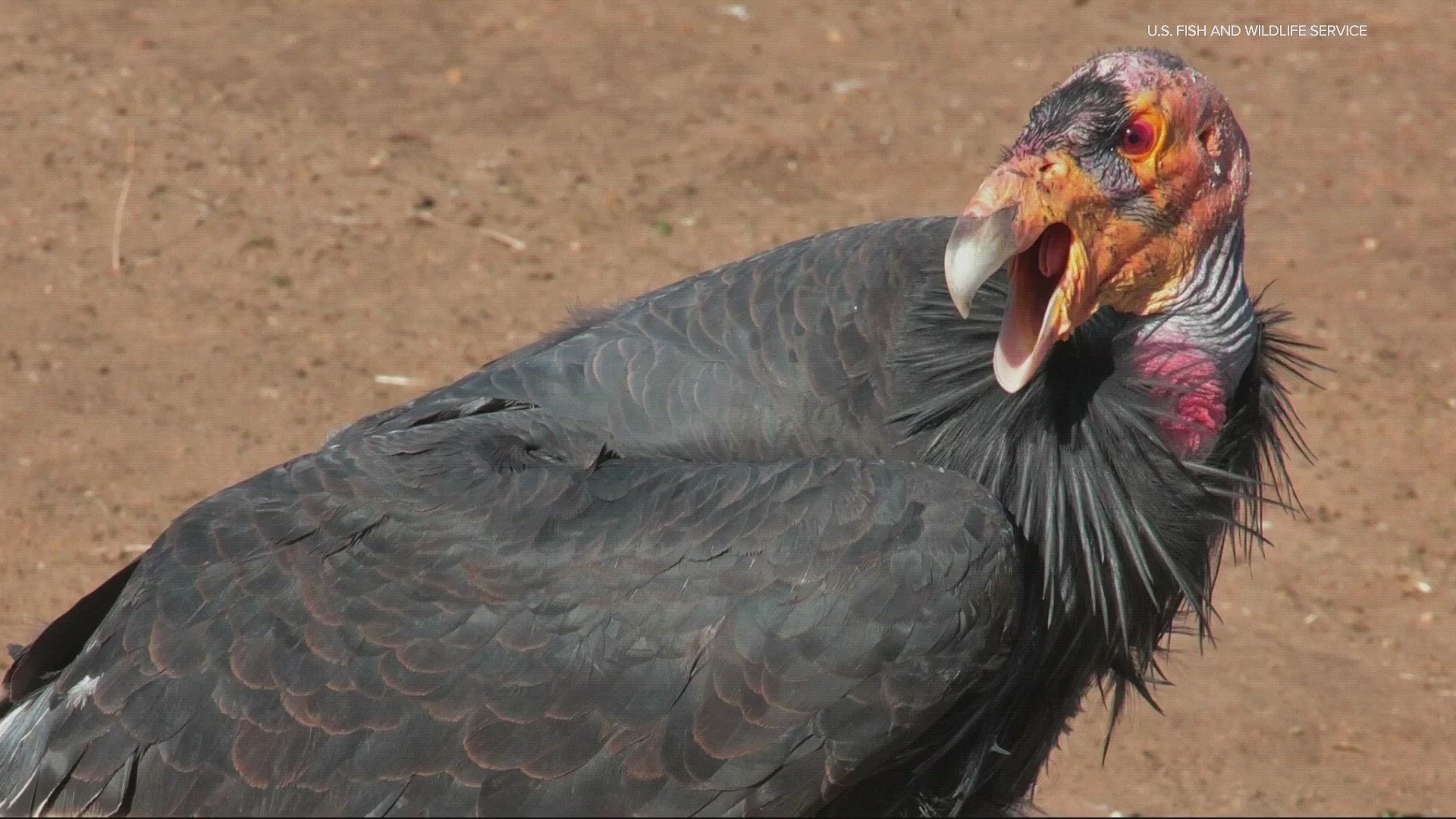CORVALLIS, Ore. — In the past year avian, or bird flu, has decimated chicken flocks and driven up egg prices. Now the highly contagious strain has taken aim at an endangered wild bird population that is already challenged.
The California condor, a magnificent bird with a nine-foot wingspan, that can soar for hours at speeds of up to 55 miles per hour. On the brink of extinction in the 1980s when just 22 existed, conservation efforts have slowly brought their population up to about 500. About 350 of those live in the wild in three geographic areas of the west.
Now highly pathogenic avian influenza (HPAI), or bird flu, is hitting the endangered species.
“This is so highly infectious that once you have it in a population it spreads very quickly,” explained Oregon State University's Dawn Dirks.
Dirks, lab supervisor of molecular diagnostics at OSU, said that is very concerning for the California condors.
Lab work at OSU's Carson College of Veterinary Medicine detected bird flu in at least seven dead condors — all from one of three wild flocks in the country.
“It has been detected in a condor population in Arizona, and the population is about 100 birds, so it's very serious,” said Dirks.
In fact, as testing continues of other sick condors in the flock, the U.S. Fish and Wildlife Service reports that 20 of the Arizona condors have died, a fifth of the population so far.
It is the same H5N1 strain of bird flu that is responsible for the deaths of more than 40 million egg laying hens in the U.S. since the outbreak began in January, 2022. The virus is spread through bird to bird contact. Egg producers have put down entire flocks of chickens, to try and stop the rapid spread.
“But of course, we won't do that to the California condors, so everything that can be done will be done in terms of providing care for the birds that are sick,” said Dirks.
But there is no vaccine for birds, and now the highly endangered California condor is facing influenza as another challenge to its existence.
In addition to both domestic and wild birds, in the last year the OSU laboratory has detected the virus in two feral cats, several skunks, a racoon and an American marten. While the risk to humans is low, experts say people still need to be cautious around wildlife,
Click here to learn more from the U.S. Fish and Wildlife Service about the risks of avian influenza and how to help keep it from spreading.

